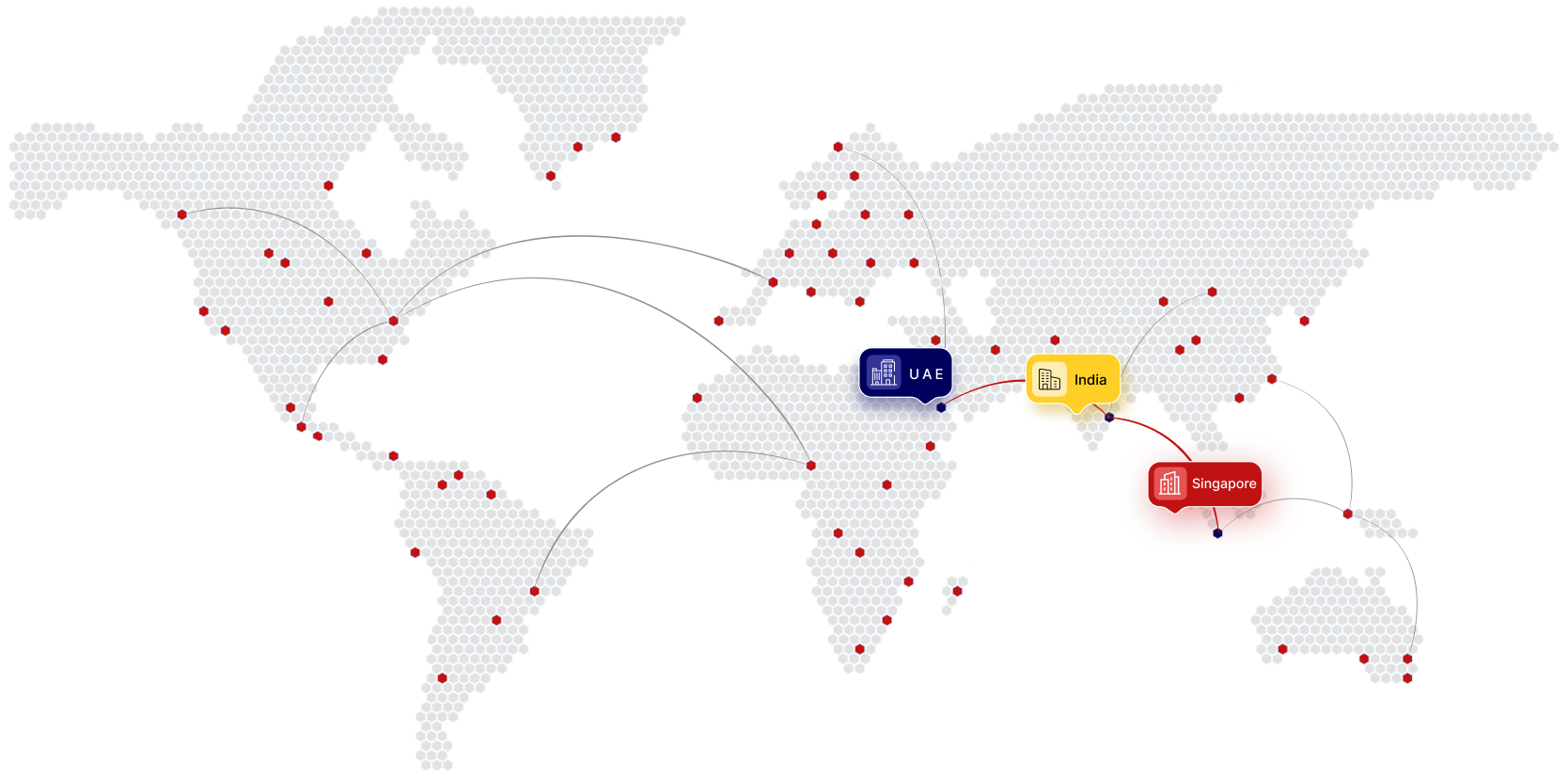- Article
- February 14, 2015
The Organisation for Economic Cooperation and Development (OECD) has recommended that Australia reduce its company tax rate and broaden the tax base.
The suggestion is made in the OECD’s new report, Economic Policy Reforms 2015: Going for Growth. The report argues that improving the efficiency of the tax system should be a key priority for the Australian Government. It says: “Consumption taxes are relatively low while income taxes are heavy. This partially reflects a high headline company tax rate, especially for a capital-importing country like Australia.”
The report notes that the 2014 Budget included plans for a 1.5 percent cut in the company tax rate from July 2015. However, Prime Minister Tony Abbott has in recent weeks said that the Government will introduce what he describes as a “small business tax cut,” which will be “at least as big as the 1.5 percent already flagged.” Business organizations have criticized Abbott’s statements as foreshadowing a move toward a “two-tier” company tax system, and they have urged the Government to implement a rate cut for all businesses.
Abbott has also made clear that while all options for tax reform are “on the table” as part of the simultaneous Tax and Federation White Paper processes, no changes can be made to the goods and services tax (GST) system without the consent of the states and territories.
For more details reach us at [email protected]
- Article
- February 13, 2015
On February 10 in Tokyo, Japan’s Prime Minister, Shinzo Abe, and his Mongolian counterpart, Chimed Saikhanbileg, signed an economic partnership agreement (EPA) between their two countries.
Negotiations towards the EPA began in 2012. The deal includes an agreement that both countries will lower almost all of their tariffs on goods over a period of 10 years.
Mongolia will remove its import duty on most Japanese cars, while Japan will eliminate its tariffs on the majority of Mongolia’s exports of industrial products (including cashmere) over the same period. Japan will also reduce its duty on Mongolian processed beef, subject to a quota.
Passenger vehicles and their components amount to more than half of Japan’s total exports to Mongolia, which totaled some USD290m in 2013. Mongolia’s exports to Japan, which are intended to be boosted by the EPA, currently consist mainly of coal and other natural resources, and outflows were worth just over USD20m in the same year.
Completion of the EPA is also intended to ensure that Japan can access stable future supplies of rare earths, which are used by its motor industry. Such supplies from China have been put in doubt after China replaced its export quotas, which were challenged before the World Trade Organization, with a licensing system, on top of high export duties.
For more details reach us at [email protected]
- Article
- February 13, 2015
The European Free Trade Association (EFTA) said that it sent a delegation to Georgia on February 4, 2015, to discuss a timeframe for free trade negotiations.
At the meeting, the two sides decided to aim for a comprehensive free trade agreement (FTA) covering trade in goods, trade in services, investment, intellectual property rights, competition, government procurement, trade and sustainable development, and legal and institutional issues, including dispute settlement.
A first round of talks is planned for the summer of 2015 with the intention of concluding negotiations within a year.
The EFTA member states – Iceland, Liechtenstein, Norway and Switzerland – signed a Joint Declaration on Cooperation with Georgia in 2012 to further enhance their bilateral economic relations.
Trade between the EFTA states and Georgia has grown significantly in recent years. Georgia’s main exports to EFTA states are mainly mineral fuels/oil and aluminum. EFTA states mainly export pharmaceutical products, clocks and watches, and fish and marine products.
For more details reach us at [email protected]
- Article
- February 13, 2015
Indian and Israel companies are seeking collaborations and joint-ventures in water technology
The India and Israel free trade agreement (FTA) is not going to be reality soon even as Israel is planning to expand its footprint in the market areas such as water management, pharmaceuticals and biotechnology.
“As I understand they (Indian govenrment) are a little bit afraid of FTA as a whole because of the industry and impact on the local industry. But Israel is not a big market player globally, it is not Europe and it is not the US. FTA with Israel can only do good. We should not look at each other as competitors but each others’ complementarities,” Amit Lang, director general of Israel’s Ministry of Economy told Business Standard.
Lang said both India and Israel are also toying with the idea of completing the talks step by step wherein first FTA with goods will be signed followed by an agreement on trade in services and investment.
“India mentioned that the FTA should be more comprehensive and not just trade in goods … But I am not sure whether it will be concluded as a whole. It may be concluded in steps. We had so far seven to eight rounds, which is normal when you negotiate FTA, especially when India does not have lot of FTAs. But Israel has much more FTAs and that too with the big ones like the US, EU, Canada and others,” he added.
>During the visit of their economic minister Naftali Bennett, both sides had agreed to increase bilateral trade to $10 billion from around $5 billion at present.
Lang said that, as a result, both sides are trying to identify the common areas of interest.
“We explained to each other what the obstacles are to the free trade agreement (FTA). The Indian side explained to us what is making them hold back the negotiations … We concluded that we will try to go forward in that. I don’t know eventually if we get to a full-scale agreement but there are things that we want to proceed in which are of mutual interest.”
Lang added that Israel can introduce to the Indian market efficient usage of technology in the area of water management or agriculture. Israel is also keen on entering the area of cyber security and life-sciences.
“We would like to enlarge our areas of cooperation and go beyond defence. India is a big challenge today in terms of water. Be it the Ganga river or any other river, India needs technology. We know it well because we in Israel have also faced worse scarcity of water and we have overcome that in the last decade.”
Indian and Israel companies are seeking collaborations and joint-ventures in water technology. Lang, who is heading a delegation of 10 leading Israeli firms, also held discussion with some of the leading Indian companies for partnerships.
Some of the leading Israeli companies keen to enter the Indian market in water management technology are Mekorot, Baran Group, ARI, Amiad, Aqwise and Arad Group among others.
Some of the states where Israel is focusing with this project are Haryana, Rajasthan, Maharashtra, Karnataka, Andhra Pradesh and Punjab.
For more details reach us at [email protected]
- Article
- February 13, 2015
UAE’s ‘material wellbeing index’ ranking is joint fourth
The UAE ranked 25th in the Natixis Global Retirement Index with its retirees outperforming several western nations including USA and Britan in key indicators.
The global findings, which analyse a total of 150 countries, suggest that retirement security is uncertain for most retirees given unsustainable demand for government resources and macroeconomic factors that affect the value of retiree savings, placing more responsibility on individual investors for their own welfare in retirement.
The UAE’s high level of employment, quality of life and stable economy all contribute to the country’s ranking. The UAE’s ‘material wellbeing index’, which measures income equality, income per capita and unemployment, ranking is joint fourth, sharing its high score of 84 per cent with Austria and Luxembourg.
Terry MellishTerry Mellish, Head of Global Institutional Services and Middle East North Africa Business at Natixis Global Asset Management, commented on some of the reasons why the UAE is doing so well.
“The UAE’s high ranking in material wellbeing is partly thanks to its high level of income per capita and high level of employment. It is worth noting that these are attributes shared by all of the report’s top five – Switzerland, Norway, Australia, Iceland and the Netherlands.”
“While these figures are generally positive, there is a much greater emphasis on individuals across the globe, including the Middle East, to do more to provide for themselves in order to maintain their standard of living in retirement. By focusing on factors within their control, such as financial planning, setting goals and being more engaged with their finances, investors will be much better positioned to ensure their own retirement security.”
The UAE’s income per capita in 2014 was $58,000 (World Bank, GNIPC) – coming in tenth out of 213 countries. The 2015 Global Retirement Index rankings shows the UAE’s stable performance among the top ranked countries as compared to 2014’s report, highlighting the role played by a stable, growing economy, high earnings and progressive public policies in the security of retirees around the world.
The lack of financial planning in today’s working age population has also been laid bare in a recent global survey of individual investors, which showed that only 13 per cent of investors worldwide said they understood their retirement savings goals very well. Even fewer still said that they understood their retirement goals as well.
The 2015 Global Retirement Index focuses on twenty factors that determine the welfare of retirees in different countries, which are grouped in to four sub-indices and corresponding with four key aspects of those in retirement: health, material wellbeing, quality of life and finances in retirement.
For more details reach us at [email protected]
- Article
- February 13, 2015
Aided by a 7.5% expansion during October- December, Asia’s third-largest economy will this fiscal see the fastest pace of growth since 2010-11
Indian economy will grow by 7.4% this fiscal, outpacing China to become the world’s fastest growing economy, after a revision in the method of calculations.
Aided by a 7.5% expansion during October- December, Asia’s third-largest economy will this fiscal see the fastest pace of growth since 2010-11 when it achieved 8.7%, even as some doubts lingered on the revised methodology.
The growth in gross domestic product (GDP) in 2010-11 was calculated based on factor cost which has now been changed to constant prices to take into account gross value addition in goods and services as well as indirect taxes. Besides, the base year has been shifted to 2011-12 from 2004-05 earlier.
Last month, the Statistics Ministry had pegged the previous year’s growth at 6.9% as against 4.7% estimated previously, a revision which led to some economists including RBI Governor Raghuram Rajan seeking more clarity.
“We do need to spend more time to understanding the GDP numbers,” he had said on February 3 after releasing the bi-monthly monetary policy of the central bank that retained the forecast of 5.5% GDP (calculation based on old method) growth in 2014-15.
“We will be watching the February 9 release with great care and dwell deeply into what we see there. At this point this is premature to take a strong view based on these GDP numbers,” he had said.
Industry chamber Assocham said the revision was confusing as “investment is yet to revive, consumer demand is not returning with a significant pace despite a sharp reduction in crude oil prices.”
The advance estimates released by the government further said the per capita net national income in 2014-15 is estimated to be Rs 88,538 showing, up 10.1% as compared to Rs 80,388 in 2013-14.
The sectors contributing to the advance estimates, include higher manufacturing growth at 6.8% and most of the services, including financial, real estate, hotels and transport growing over seven% in the fiscal.
However, agriculture is pegged at 1.1%, much lower than 3.7% achieved in the last fiscal.
For more details reach us at [email protected]
- Article
- February 13, 2015
In a reflection of improving growth prospects, the CLI for India inched up to 99.4 in Dec
India’s growth is “firming up” while most major economies, including China and the US, are seeing stable momentum, according to the Paris-based think-tank, Organisation for Economic Cooperation and Development. In a report released on Monday, OECD also said the euro area is seeing tentative signs of positive change in growth momentum.
The analysis was based on its Composite Leading Indicators (CLIs), designed to anticipate turning points in economic activity relative to trend, in December 2014. In a reflection of improving growth prospects, the CLI for India inched up to 99.4 in December 2014 compared to November 2014.
“The CLI for India indicates firming growth while in Russia the CLI continues to point to a loss in growth momentum,” OECD said in a statement.
India’s CLI has been rising since August 2014 when it stood at August 98.9. In November last, the same stood at 99.3.
After slowing to sub-5 per cent growth in the previous two financial years, Indian economy has started picking up. The GDP expanded by 5.7 per cent and 5.3 per cent in the first two quarters of current financial year (which ends on March 2015), respectively.
Based on the updated base year for measuring national accounts, Indian economy registered 6.9 per cent growth during the 2013-14 period.
The Gross Domestic Product (GDP) growth rate for 2013-14 has gone up following adoption of the new series with base year 2011-12. The rate of expansion was estimated at 4.7 per cent under the old series that had 2004-05 as base year.
The base year was last revised in January 2010 and goes under revision every five years.
As per OECD, the CLIs in December 2014 indicate stable growth momentum in the OECD area as whole and “in some of the major economies, including the United States, Canada, Japan, China and Brazil”.
There are “tentative signs of a positive change in growth momentum in the euro area, particularly in Germany and Spain,” it added.
OECD is also a grouping of 34 mostly rich nations.
- Article
- February 10, 2015
Moody’s Analytics, a research firm of the Moody’s group, on Friday projected India’s economy to grow by six per cent in the October-December period of 2014-15. Official data for the quarter is to be released on Monday.
“An upturn in fixed investment should drive better GDP (gross domestic product) growth,” Moody’s Analytics said.
If the rate of growth in the quarter is six per cent, it will be the highest since the December quarter of 2011-12 — a three-year high.
Moody’s estimates are based on the older definition of gross domestic product (GDP) and 2004-05 as the base year. After some recent changes in calculation methodology, 2011-12 has now been set as the new base year and GDP, unlike the earlier method, includes indirect taxes net of subsidies.
On Monday, the government will release advance estimates for 2014-15, as well as for the first three quarters of the current financial year — on the basis of the revised methodology.
By older computation, India’s GDP grew 5.7 per cent in the June quarter and 5.3 per cent in the next, aggregating 5.5 per cent growth in the first half of the year.
However, gross fixed capital formation, a proxy for investment, grew at a slower pace of 0.02 per cent in the September quarter, against over seven per cent in the June one.
On new GDP numbers, Moody’s Analytics said it was still digesting the details and the numbers to be released on February 9 would provide further clues on where the economy currently stands.
By revised methodology, India’s GDP growth was revised to 5.1 per cent for the June quarter and 6.9 per cent for the September quarter of 2014-15.
For more details reach us at [email protected]
- Article
- February 10, 2015
>Market cap of all indices, except Abu Dhabi and Qatar, ended higher for Jan
>The combined market capitalization of GCC bourses rose 1.9 per cent month-on-month (MoM) to $1.03 trillion (Dh3.78 trillion) in January 2015 despite drop in equities in line with oil price, Global Investment House said in a report.
The market capitalization of all indices, except Abu Dhabi and Qatar, ended higher for the month.
At $510.2bn, Saudi Arabia was the largest contributor (49.5 per cent), followed by Abu Dhabi and Dubai ($198.7bn or 19.3 per cent), and Qatar ($177.9bn or 17.3 per cent). Kuwait, Oman, and Bahrain together contributed $143.3bn.
The Kuwaiti investment bank said GCC markets ended mixed in January 2015.
The TASI gained the most (up 6.5 per cent MoM) as a sharp increase in oil prices at the end of the month boosted sentiment, followed by MSM30 (3.4 per cent MoM) and KSE (0.6 per cent MoM).
Other GCC markets ended in the red due to prolonged concerns over a dip in oil prices. The US Energy Information Administration’s report showed that crude stockpiles in the US surged to an 80-year high during the month, which dented sentiment. However, positive earnings offset the fall. QE was the biggest loser (-3.1 per cent MoM), followed by DFM (-2.6 per cent MoM), ADX (-1.6 per cent MoM), and BSE (-0.2 per cent MoM).
Trading in GCC markets declined in January 2015. Volume traded dropped 29 per cent MoM, with all markets recording a fall. Value traded plunged 27.1 per cent MoM due to a decline in value traded in all bourses. Bahrain, Oman, Qatar and the UAE were the major losers. Saudi Arabia was the biggest contributor ($41.7bn) to the total trading value ($51bn).
Long-term growth to remain intact
GCC markets ended mixed in January as weak sentiment due to falling oil prices was offset by positive earnings and value buying across sectors.
Among sectoral indices, Banks remained the key gainer, largely due to positive earnings.
Recently, Kuwait’s government projected a deficit in its 2015 budget, indicating that a decline in oil prices would impact the GCC countries in the short term.
GCC produces about 20 per cent of total global oil output and accounts for nearly 35 per cent of global oil exports.
However, Saudi Arabia’s government reiterated that it would continue to spend into non-oil sectors to diversify its economy away from oil. This was reflected in its 2015 budget and reaffirmed on January 30, 2015, when the new King Salman ordered two months of salary bonus to all public sector employees among several other expenditure as well as reorganization in top government positions.
In terms of valuation, the price earning (PE) ratio of GCC markets is at 9.8-18.2x, lower than its key emerging markets peers.
Long-term valuations of GCC markets remained intact, following the inclusion of the three largest GCC markets – the UAE and Qatar in May 2014 and Saudi Arabia expected in H1 2017 – on the MSCI Emerging Markets Index.
Qatar is expected to attract significant infrastructural investments as Fifa President Sepp Blatter reaffirmed that the World Cup 2022 would be held in the country. The UAE markets would record strong growth with the hosting of Dubai Expo 2020. Kuwait, Bahrain and Oman would follow their larger peers, with gradual improvement in non-oil revenues.
UAE – Abu Dhabi
Abu Dhabi’s ADX declined 1.6 per cent MoM in January, following a 3.1 per cent MoM fall in December. The decline in Real Estate and Banks was partly offset by strong performance from Investment & Financial Services stocks.
The index started the month by posting declines due to falling oil prices, but soon recovered in the second week. In the last week of January, the market was impacted by volatility in global markets. In terms of corporate performance, Islamic banks reported strong growth in earnings and improved asset quality.
Tasweek, the Abu Dhabi based property investor, delayed the launch of its IPO due to volatile markets and expects to execute it in Q1 2015.
However, the company has still not decided whether to list in Dubai or Abu Dhabi. The planned IPO of Massar Solutions is likely to be delayed due to weak market conditions amidst volatility in regional capital markets and subdued oil prices.
Trading on the ADX fell in January. Total trading volume fell 66 per cent MoM to 1.8bn shares from 5.1bn shares in December and the total value traded declined 54.6 per cent MoM to $1.1bn.
At the end of January, market capitalization of the companies listed on the ADX fell 2 per cent MoM to $111.4bn. Total market capitalization of the top 10 listed companies fell 2.4 per cent MoM.
UAE – Dubai
The Dubai Financial Market (DFM) index fell 2.6% MoM in January, compared to an 11.9% MoM decline in December. The decline was largely ascribed to a fall in the Real Estate & Construction and Investment & Financial Services sectors, partly offset by gains in the Transportation sector.
The index started the month on a weak note due to global cues and subdued oil prices. However, it recovered sharply, with the index being the top global performer on January 7. This was ascribed to a slowing of the crude oil price decline.
Towards the end of the month, an announcement by the Dubai Courts of an expanded list of more than 150 cancelled developments in the Emirate weighed on the Real Estate & Construction stocks. This contributed to the overall correction in the market. However, strong corporate earnings enhanced investors’ confidence, limiting the downside.
Trading on the DFM declined in January, with volume down 30.4 per cent MoM to 8.2bn shares. The value traded fell 38 per cent MoM to $3.8bn.
At the end of January, the market capitalization of companies listed on the DFM rose 2 per cent MoM to $87.3bn. The total market capitalization of the top 10 listed companies fell 0.4 per cent MoM.
For more details reach us at [email protected]
- Article
- February 10, 2015
Jersey-based financial institutions are now able to register with local authorities in preparation for the submission of the first reports under the US Foreign Account Tax Compliance Act (FATCA).
FATCA requires financial institutions outside the US to report information on financial accounts held by their US customers to the Internal Revenue Service (IRS). Jersey has concluded an intergovernmental agreement with the US to enable financial institutions to submit data to a central authority in Jersey, which will then share that data with the Internal Revenue Service.
A test platform has been available to local financial institutions since the beginning of 2015 to test their file formats and familiarize themselves with the FATCA return process. Now financial institutions can register on the live system and submit information required under the FATCA rules. The information required under FATCA must be submitted by June 30 each year.
The Minister for Treasury and Resources Alan Maclean said: “The launch of the online reporting platform means that our financial institutions will be in the best possible position to ensure that they meet the June 30 reporting deadline for FATCA and avoid the 30 percent US withholding tax. It further demonstrates that Jersey is strongly committed to supporting international initiatives designed to improve tax transparency.”
Financial institutions in Jersey should have already registered with the IRS in order to obtain a Global Intermediary Identification Number (GIIN). When registering in Jersey they must enter the GIIN and other information, including a designated point of contact.
For more details reach us at [email protected]
A Member Firm of Andersen Global
- 170+ Countries
- 390+ Locations
- 13,000+ Professionals
- 1800 + Global Partners

- 170+ Countries
- 390+ Locations
- 13,000+ Professionals
- 1800 + Global Partners

- 170+ Countries
- 390+ Locations
- 13,000+ Professionals
- 1800 + Global Partners












